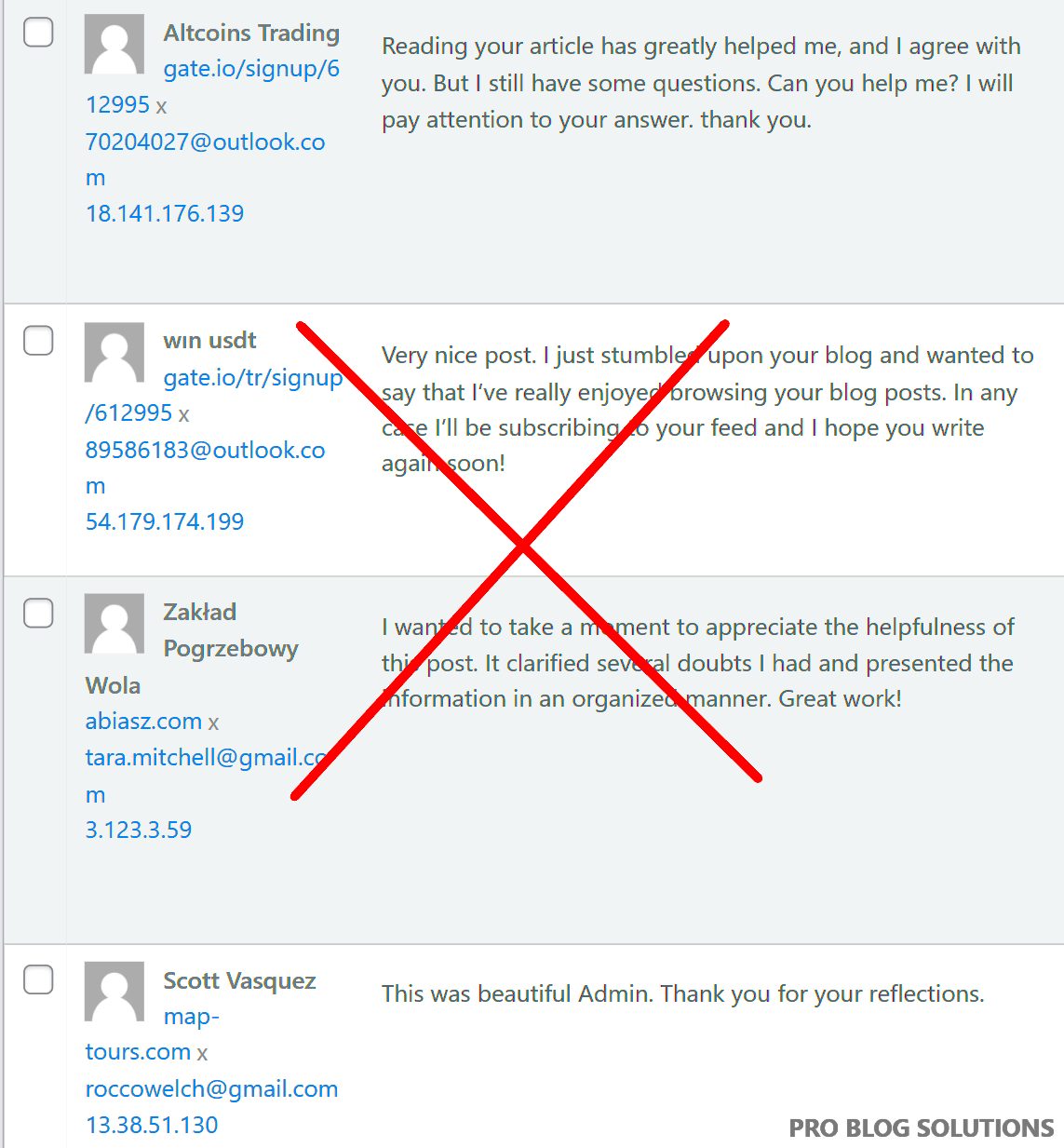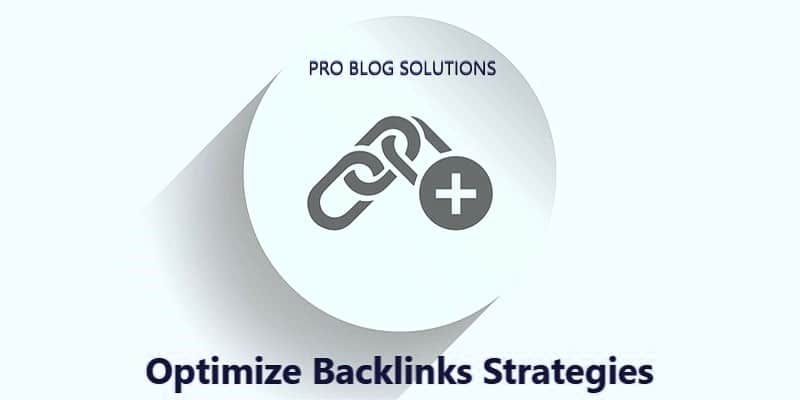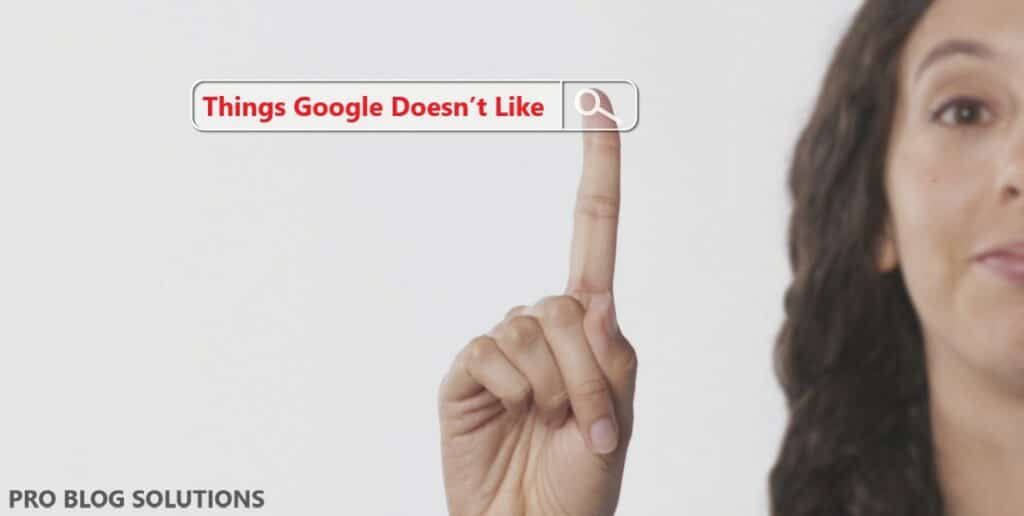In the world of Search Engine Optimization (SEO), many factors contribute to the success of a website in terms of ranking on search engine results pages (SERPs). One such factor is the optimization of backlink strategies.
In this article, we’ll explore why optimizing backlinks is vital for SEO, what steps you can take to ensure your backlinks are working to their full potential, and what you need to do to optimize backlink strategies with do and don'ts.
Backlinks are essential to SEO, and optimizing backlink strategies is crucial for Google ranking factors. They show a website's relevance and authority to search engines. Many high-quality backlinks prove your website is reliable and ranked high in search results.
An effective link-building strategy can help you get high-quality backlinks and increase your organic ranking in organic search results. However, there are some other things you need to know about optimizing backlink strategies.
Low-quality backlinks, such as spammy website links, can affect your reliability and ranking, so redirect the link through the relevant website to optimize backlinks strategies. Rather than just linking to your blog, you should focus on choosing high-quality backlinks for higher rankings.
Types of Content That Can Greatly Help You Get Backlinks in 2025
Quality backlinks are a crucial ranking factor for search engines like Google, and they can significantly improve your website's visibility in search results.
Backlinks signal to search engines that your website is authoritative and trustworthy, leading to higher rankings and more organic traffic.
Which Types of Content Attract Backlinks?
Not all content is created equal when it comes to attracting backlinks. Certain types of content are more likely to be shared, linked to, and referenced by other websites. Here are some of the most effective types of content for building backlinks:
1. Original Research:
Conducting your research and publishing the results is a powerful way to attract backlinks. Original research provides valuable data and insights that other websites may want to reference or cite. This type of content is highly credible and authoritative, making it a magnet for backlinks.
2. Infographics:
Infographics are visually appealing and easy-to-digest summaries of complex information. They are highly shareable and engaging, which makes them ideal for attracting backlinks from niche and mainstream websites. You can see the example below:
3. How-to Guides:
People are always looking for step-by-step instructions on how to perform tasks. Creating comprehensive and well-researched how-to guides on relevant topics will attract backlinks from individuals and businesses looking to provide value to their audience.
4. Expert Roundups:
Compile insights and opinions from industry experts on a specific topic. Gathering perspectives from thought leaders in your field creates a valuable resource that other websites may want to link to.
5. Listicles:
Listicles are articles that break down information into concise and engaging lists. They are visually appealing, easy to scan, and highly shareable, making them popular for backlink generation.
6. Case Studies and Success Stories:
Demonstrate the effectiveness of your product or service by showcasing real-world examples of how it has helped others. Case studies provide social proof and credibility, attracting backlinks from websites interested in showcasing successful strategies and solutions.
7. Original Data Visualizations (Industry Reports & Trends):
Visualize industry data in an engaging and informative way. Original data visualizations stand out from the crowd and attract backlinks from websites looking to share valuable insights with their audience.
8. Educational Videos:
Create informative and engaging videos that teach viewers about relevant topics in your industry. Videos are highly shareable formats that attract backlinks from educational and entertainment websites.
9. Interviews and Guest Posts:
Interview experts in your field and share their insights with your audience. Guest posting on high-quality websites can also generate backlinks and increase your website's visibility.
10. Resources and Infographics:
Create valuable resources, such as cheat sheets, templates, or downloadable guides, and make them available for free download. These resources attract backlinks from websites that want to provide helpful content to their audience.
Additional Tips for Attracting Backlinks:
- Build relationships with influencers and bloggers: Reach out to influencers and bloggers in your industry and offer to contribute guest posts, interviews, or data visualizations.
- Participate in industry events and conferences: Network with other professionals and promote your content at industry events.
- Get social media followers: Share your content and actively engage with your audience.
- Submit your content to directories and aggregators: Submit your content to relevant directories and aggregators to increase its visibility.
- Build a strong backlink profile: Avoid low-quality or spammy backlinks, which can harm your website's reputation.
Remember, backlinks are a long-term strategy. Building a solid backlink profile takes time and effort, but the rewards are worth it. Creating high-quality, valuable content that resonates with your audience can attract backlinks to boost your website's search engine rankings and drive more organic traffic.
Why Are Optimizing Backlink Strategies Important in SEO?
Before diving into the importance of optimizing backlinks, let’s define what a backlink is. A backlink is a link from one website to another.
For example, if Website A links to Website B, Website B has received a backlink from Website A.
Backlinks are essential for SEO because they are seen as a vote of confidence from one website to another. Each backlink is essentially a “thumbs up” for the website being linked to, telling search engines that the website is reputable, trustworthy, and authoritative.

Now that we understand what backlinks are let’s explore why optimizing backlinks is essential for SEO. The first reason is that not all backlinks are created equal. A backlink from a reputable website in your industry is worth more than a lower-quality website.
Search engines consider the authority and relevance of the website linking to you when determining the value of that backlink. That’s why it’s important to build high-quality backlinks from authoritative websites.
Another reason optimizing backlinks is vital for SEO is that the anchor text of the backlink matters. Anchor text is the clickable text that contains the link. For example, in the sentence “Check out this helpful article about SEO,” the anchor text is “helpful article about SEO.”
Search engines use anchor text to understand what the linked-to page is about. It’s essential to use relevant, descriptive anchor text that accurately reflects the content of the linked-to page.
Optimizing backlinks is also crucial for SEO because it helps to build a strong and diverse backlink profile. A strong backlink profile includes a variety of high-quality backlinks from a range of websites.
This helps to demonstrate to search engines that your website is reputable, trustworthy, and authoritative within your industry. By building a diverse backlink profile, you’ll be less vulnerable to algorithm updates and penalties that can occur if you rely too heavily on any one type of backlink.
So, how can you optimize your backlinks for SEO? Here are some quick tips:
- Focus on building high-quality, relevant backlinks from authoritative websites in your industry.
- Use descriptive, relevant anchor text for your backlinks.
- Diversify your backlink profile by building various types of backlinks from different websites.
- You should monitor your backlinks regularly to ensure they are functional and the websites linking to you are still authoritative and relevant.
Optimizing backlinks is an integral part of any SEO strategy. By building high-quality, relevant backlinks from authoritative websites, using descriptive, relevant anchor text, and building a diverse backlink profile, you’ll be well on improving your website’s ranking on search engine results pages.
Below, we listed in detail the additional strategies that might help or hurt your site when planning your backlinking strategy and why they are listed below.
Do's and Don’ts to Optimize Backlinks Strategies in 2025
Link building has been an effective strategy for achieving high PR with Google rankings. The optimized backlinks strategies shouldn't be too complicated. Creating a backlink is straightforward, and the results may take some time.
A good approach for building backlinks from high-authority websites is one of the most effective strategies to boost your rank in search engine results pages (SERPs).
This entails optimizing your content, utilizing other sites' material, and using innovative link-building techniques—and it's well worth the effort.
High-quality backlinks increase organic traffic to your website, improve your domain's authority, increase sales, and strengthen your brand. Still, you have to remember that high-quality backlinks are notoriously challenging to come by.
However, many companies accidentally generate backlink errors classified as spam by search engines like Google. Some backlink techniques produce faster results but can backfire after updating the algorithm.

We'll discuss optimizing backlink strategies and the dos and don'ts of backlink building to ensure that your site gains maximum benefit using the right ways to optimize backlink strategies.
What Should You Do to Optimize Backlink Strategies for SEO?
Link building is most successful when it's a two-way street. When asking web admins, editors, and writers to link to your site on their resource page or article, that page must provide value to their audience to optimize backlinks strategies. Both parties should view adding the suggested link as a “win-win.”
1. Scope Your Competition’s Backlinks

For this, you will log into one of the leading search engines and type in special search terms to gather information on your or your competitor's backlinks. It's like online business spying.
2. Offer RSS Feeds

An RSS Really Simple Syndication feed is an online file that contains details about every piece of content a site has published. Each time a site publishes a new article, information on that content, including the full text of the content or a summary, publication date, author, link, etc., is automatically generated in the file and displayed in reverse chronological order.
If you offer people looking for content an RSS feed to content on your site, they will automatically backlink to you.
You may also like to read:
- Sell Your Photos Online With Websites That Pay $43+ Per Image
- How to Attract Readers to Your Blog With Ways?
- Blogger Vs. WordPress Comparison: Cost & SEO Differences
- How to Protect Your Smart Home From Hackers?
- Stop AdSense From Disable Your Account for Invalid Click Activity
3. Keyword Research and Targeting
Keyword research is finding and analyzing search terms that people enter into search engines intending to use that data for a specific purpose, often for search engine optimization (SEO) or general marketing. Keyword research can uncover queries to target, their popularity, their ranking difficulty, and more.
Building links on a big scale is about providing relevant content so people will keep linking to it. Keyword targeting is an essential aspect of optimizing backlinks strategies.
So before you get started, make sure you are crystal clear on why you're doing keyword research and the results you expect from optimizing backlinks strategies.
4. Favor High-DA Sites Over Low-DA Sites
Google judges the number of linking domains to your site and the quality of those linking domains. Domain authority (DA) is a relative measure of the trustworthiness of a given site. The higher the DA of a domain is, the more authority its links will have.
Accordingly, getting a link on a high-DA site is better than a comparable link on a low-DA site to optimize backlinks strategies. As a bonus, high-DA sites tend to get more traffic on their own, which means they'll be more likely to pass referral traffic your way.
5. Add Content to Social Sites
Almost all social networks, and all major ones, nofollow all external links. These links pass no SEO equity to the target pages, but you can still use social networks to drive target visitors to your blog.
Add content to popular social networking sites like YouTube or Facebook with a backlink to your site to optimize backlinks strategies. If your content goes viral, you can end up with many quality links returning to your website.
6. Place your Link Early in the Article
This indicates that the higher the value, the more stable the links on the page. The first or last link in the text is much more critical than a sidebar link or footnote link. If possible, make the most of the links to optimize backlinks strategies.
It also helps generate referral traffic. The first link gets more attention and increases brand awareness and overall clicks.
7. Do Press Releases

Press releases have been around for a long time for a straightforward reason: anyone can write one to optimize backlinks strategies. You can write one in an hour; then, you can fire off some emails to a few journalists.
Press releases are quick and easy to produce. However, your business will succeed tremendously if you release them when you have something to say and spend a few more hours planning and writing them.
You can write a press release and send it to sites that publish new announcements if you have noteworthy news.
8. Create Content that Others Want to Link
Collect statistics related to a topic in your niche. Create a detailed and well-organized article on it to optimize backlinks strategies. Add eye-catching information, provide visuals to it, and see the magic.
Creating content and marketing it well through social media and outreach is a far more effective backlinking than guest blogging.
What Should You Not Do to Optimize Backlink Strategies?
Blackhat backlinking strategies have been floating around for years with the intent to acquire undeserved search rankings.
But with each update to Google's algorithm, it's actually more complex and riskier for a business to survive on blackhat backlinking strategies since a single algorithm update could ruin your site, so be careful with your optimized backlinks strategies.
1. Don’t do Backlink Bombing
If you own more than one site and start to put in reciprocal interrelated links for all your sites in a massive bombing, Google will penalize you.
Google has become adept at defending its search index from spammy practices, such as manipulating search rankings positively or negatively.
2. Stop Spam Blog Comments

Spam comments are the worst, wouldn't you agree? Spam commenters are increasing, becoming more popular on website comments, Instagram, and other social media sites.
The whole reason why spammers leave spam comments on blogs is to link back to their own websites to rank higher in the search results and get more traffic. Basically, people are shamelessly and shadily promoting their websites.
Approximately 90% of the comments are spam. You have to moderate all comments before approval. Never accept comments without real names. If “cheap design” says your content was excellent and leaves a link, hit the spam button as fast as possible.
3. Don't Link to Low-Quality Content

Link building is a gradual process, making many of us restless. For quicker results, many adopt unfair means to build links.
You always do thorough research on a website before building links to not end up with low-quality backlinks.
Optimize Backlinks Strategies
They try getting backlinks from any website without caring much about its domain authority or spam score. As a result, their sites often get linked to low-quality content that hurts the site's reputation.
4. Don’t Link to Penalized Websites
Always pay very close attention to what websites you are linking. Linking out to bad sites can decrease the value of your site. Never link to untrusted sources to optimize backlinks strategies.
This is a practice that many agencies offer or that people at a company without detailed SEO knowledge include as part of their strategy. People manually add a link to their site or with an automated platform to believe it will contribute to SEO.
Your blog readers feel intense dislike or disgust for seeing these spammy links and, therefore, are flagged by Google, and the link spamming website is penalized.
5. Don’t do Link Exchanges

Reciprocal links are outdated, and you should stay away from this technique. Google's Webmaster Guidelines clearly state that excessive link exchanges are against their terms. However, you can read the Google statement below:
Google uses links as an essential factor in determining the relevancy of web pages. Any links manipulating rankings in Google Search results may be considered link spam. This includes any behavior that uses links or outgoing links from your site. The following are examples of link spam:
- Buying or selling links for ranking purposes. This includes:
- Exchanging money for links or posts that contain links
- Exchanging goods or services for links
- Sending someone a product in exchange for them writing about it and including a link
- Excessive link exchanges (“Link to me and I'll link to you”) or partner pages exclusively for the sake of cross-linking
- Using automated programs or services to create links to your site
- Requiring a link as part of a Terms of Service, contract, or similar arrangement without allowing a third-party content owner the choice of qualifying the outbound link
- Text advertisements or text links that don't block ranking credit
- Advertorials or native advertising where payment is received for articles with links that pass ranking credit or links with optimized anchor text in articles, guest posts, or press releases distributed on other sites. For example, there are many wedding rings on the market. If you want to have a wedding, you must pick the best ring. You will also need to buy flowers and a wedding dress.
- Low-quality directory or bookmark site links
- Keyword-rich, hidden, or low-quality links embedded in widgets that are distributed across various sites
- Widely distributed links in the footers or templates of various sites
- For example, use forum comments with optimized links in the post or signature. Thanks, that's great info!
– Paul
paul's pizza san diego pizza best pizza san diego
Google understands that buying and selling links is a normal part of the web economy for advertising and sponsorship purposes. It's not a violation of our policies to have such links as long as they are qualified with a rel="nofollow" or rel="sponsored" attribute value to the <a> tag.
Source: Google Search Central
It's crucial to employ common sense when considering a link exchange. It would help if you weren't focused on perceived SEO benefits or link juice. Instead, the focus should be on relevancy.
6. Don’t Publish Low-Quality Content
While having a lot of content on your site is essential, Panda updates penalize you if the quality is low, especially if your content is fragile and short.
Google doesn't like low-quality content. In fact, if Google's team of quality raters flags the content of your blog posts as low-quality, you could have a hard time getting organic search traffic to your website.
Search traffic, specifically from Google, is the lifeblood of a website. Without it, you’ll have a hard time building your brand and business.
Optimize Backlinks Strategies Do’s and Don’ts
The key to making sure Google quality raters don't think your content is low-quality is understanding how Google defines the term and creating content that doesn't tick any of Google's low-quality rating boxes.
7. Don't Fall for Spammy Paid Links
Paid link-building is more accessible to implement than manual link-building. Many spammy sites can trick you into building links in exchange for money.
Usually, such easy-to-build paid links are offered by spammy sites. So, be careful before agreeing to such paid links. Double-check the site's authority and relevancy, and ensure they are relevant to your niche industry.
8. Don’t Suggest Specific Anchor Text
Suggesting specific anchor text to web admins is an outdated and unhelpful SEO tactic. To avoid rewarding sites with unnatural “keyword stuffing” in their content, Google favors sites that show a healthy variety of anchor text in a site's backlink profile.
We recommend you allow web admins, editors, and writers to decide what anchor text to use when adding your link to their site.
Optimize Backlinks Strategies
When Google notices an unnatural amount of links with the exact anchor text pointing to a site, it risks being penalized.
More interesting topics for you:
- Solutions to Increase Your Adsense Earnings
- Internet Safety Tips to Avoid Being Scammed Online
- How to Improve Core Web Vitals Ranking Factor?
- Smart Ways to Get More YouTube Subscribers
- Easy Ways to View Or Mirror Phone Screen on PC
9. Don’t Engage in Black-Hat Link Building Tactics
Over the years, several tactics have been designed to shortcut natural search engine rankings. Examples of these tactics include:
- Cloaking: Attempting to deceive by presenting different content or URLs to search engines and users.
- Hidden text links: Attempting to hide the appearance of stuffing keywords on a page makes them hard to find (e.g., white text on a white background, locating text behind an image).
- Injecting links: Hacking into a site you don’t own to insert a link.
Roundup of Optimizing Backlinks Strategies for Better SEO in 2025
As we all know, backlinks, or inbound or incoming links, are links from one website to another. They are like votes of confidence from other websites, telling search engines that your website is authoritative and trustworthy.
The more backlinks you have from reputable sources, the higher your website will rank in search engine results pages (SERPs).
Why are Backlinks Important?
Backlinks are essential for several reasons:
- Search engine ranking: Backlinks are among the most important ranking factors for search engines like Google. The more backlinks you have from high-quality websites, the higher your website will rank for relevant keywords.
- Referral traffic: Backlinks can also help you drive referral traffic to your website. When someone clicks on a backlink from another website, they are directed to your website. This can help you increase your website's traffic and visibility.
- Credibility and authority: Backlinks from reputable websites can help establish your website as an authority in your industry. This can make your website more trustworthy and credible to potential customers and partners.
How to Get Backlinks?
There are several ways to get backlinks to your website. Some of the most common methods include:
- Create high-quality content: The best way to get backlinks is to create high-quality content relevant to your target audience. Other websites will be more likely to link to your content if it is informative, well-written, and valuable to their readers.
- Participate in online communities: Engage in relevant online communities, such as forums, social media groups, and industry blogs. People may link to your website when you contribute valuable content and participate in discussions.
- Guest blogging: Write guest posts on other websites in your industry. This can help you reach a new audience and get backlinks to your website.
- Broken link building: Identify broken links on other websites relevant to your content. Reach out to the website owners and suggest that they replace the broken link with a link to your content.
Examples of Backlinks
Here are some examples of backlinks:
- A blog post on TechCrunch links to your website with a do-follow link.
- A website in your industry lists your website as a resource in its sidebar.
- A forum post includes a link to your website in the poster's signature.
Tips for Building Backlinks
- Focus on quality over quantity: It is better to have a few high-quality backlinks from reputable websites than to have a lot of low-quality backlinks from spammy websites.
- Build backlinks naturally: It is important to build backlinks naturally. Don't try to manipulate search engines by buying backlinks or participating in link exchange schemes.
- Monitor your backlink profile: Use a backlink checker tool to monitor your backlink profile and identify any suspicious or low-quality links.
Following these tips, you can build a strong backlink profile that will help your website rank higher in search engine results pages and attract more traffic.
FAQs About Optimize Backlinks Strategies in 2025:
The more backlinks you get, the better, so continue working on your backlinking strategy on an ongoing basis forever, not just when you launch your new website.
One of the quickest ways search engines will realize that your backlinks are genuine is if you have a massive surge of backlink-building activity right when your site launches, and then it stops immediately.
What is the best link-building strategy?
The best link-building strategy is to create and distribute infographics. Infographics still work today and can play a vital role in your link-building process. The good thing about infographics is that you'll continually generate organic traffic to your blog and earn quality links, even when you didn't ask for them.
How can I get free quality backlinks?
Write guest posts for other quality sites to get free quality backlinks. Google technically forbids businesses to do this, but posting guest posts on top niche websites in the industry is a great way to get free backlinks. Google and other search engines monitor excessive backlink exchanges for this behavior.
What is a backlink strategy?
Backlink strategies have been an essential part of online marketing for a long time now. They help improve your website's traffic, rank, reputation, and relationships. The effectiveness of quality backlinks to your site has not changed, but the methods you get them to have.
Conclusion on Optimize Backlinks Strategies for Better SEO in 2025:
Following these dos and don'ts can help you make the most of your backlink strategy and improve your SEO ranking.
Building backlinks is an essential part of a winning SEO strategy, as every link that leads back to your website can improve your traffic, conversions, and ranking online. Use these techniques to analyze your competition's backlink strategies and capitalize on their success.
To show natural growth and look like an essential site in your niche, you will need to continue building your backlinks on an ongoing basis for the life of your website.
This is not a part-time job unless you want to make part-time money. Your website will rise in search engines faster than you imagine to continually build your backlinks.







Link building is the process of getting other websites to include links to your site on their own pages. These links can be text or images and can be placed anywhere on the page. When Google sees these links on other sites, it recognizes them as votes for your site’s relevancy. As a result, your site’s ranking in search engine results increases.